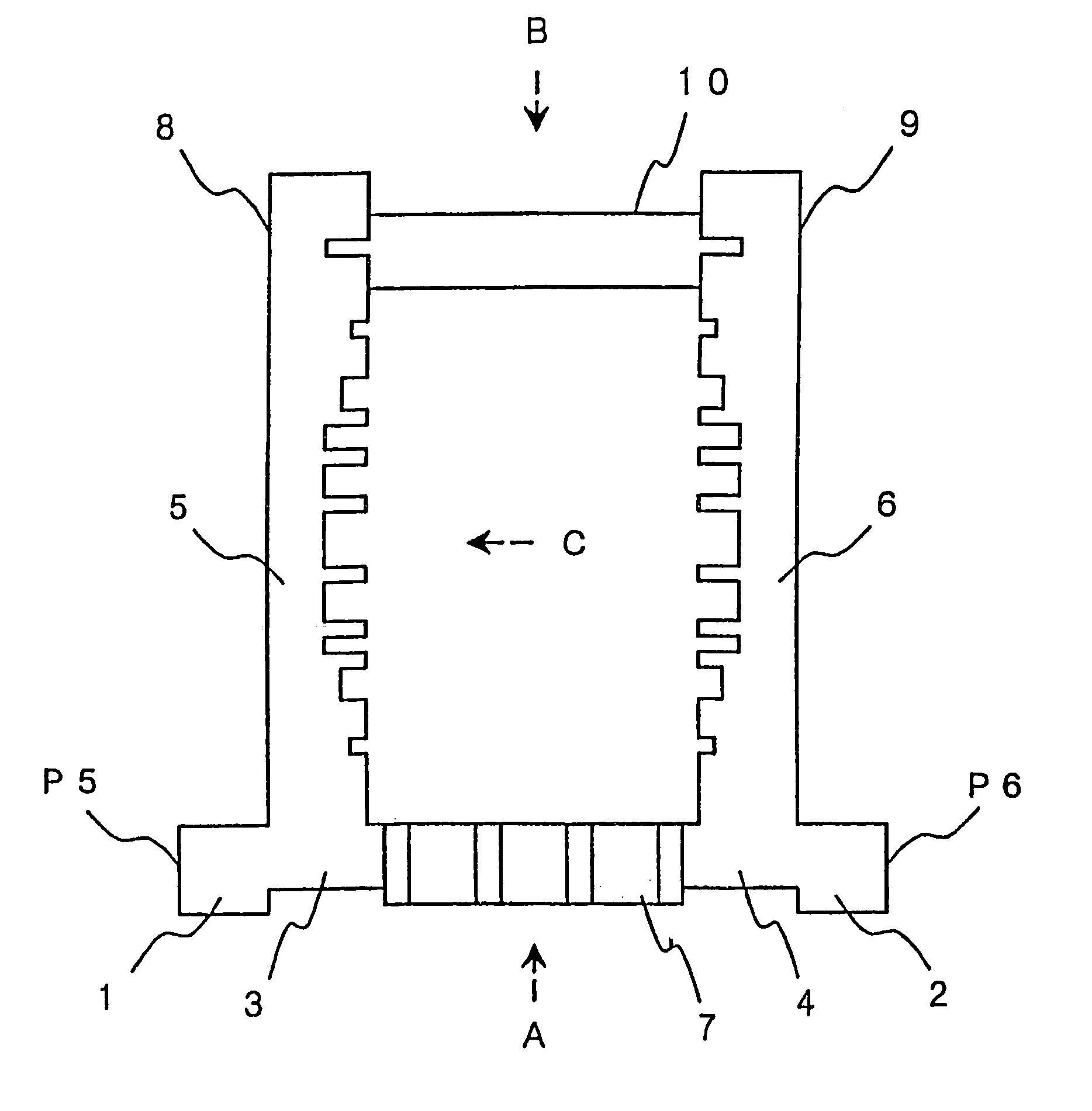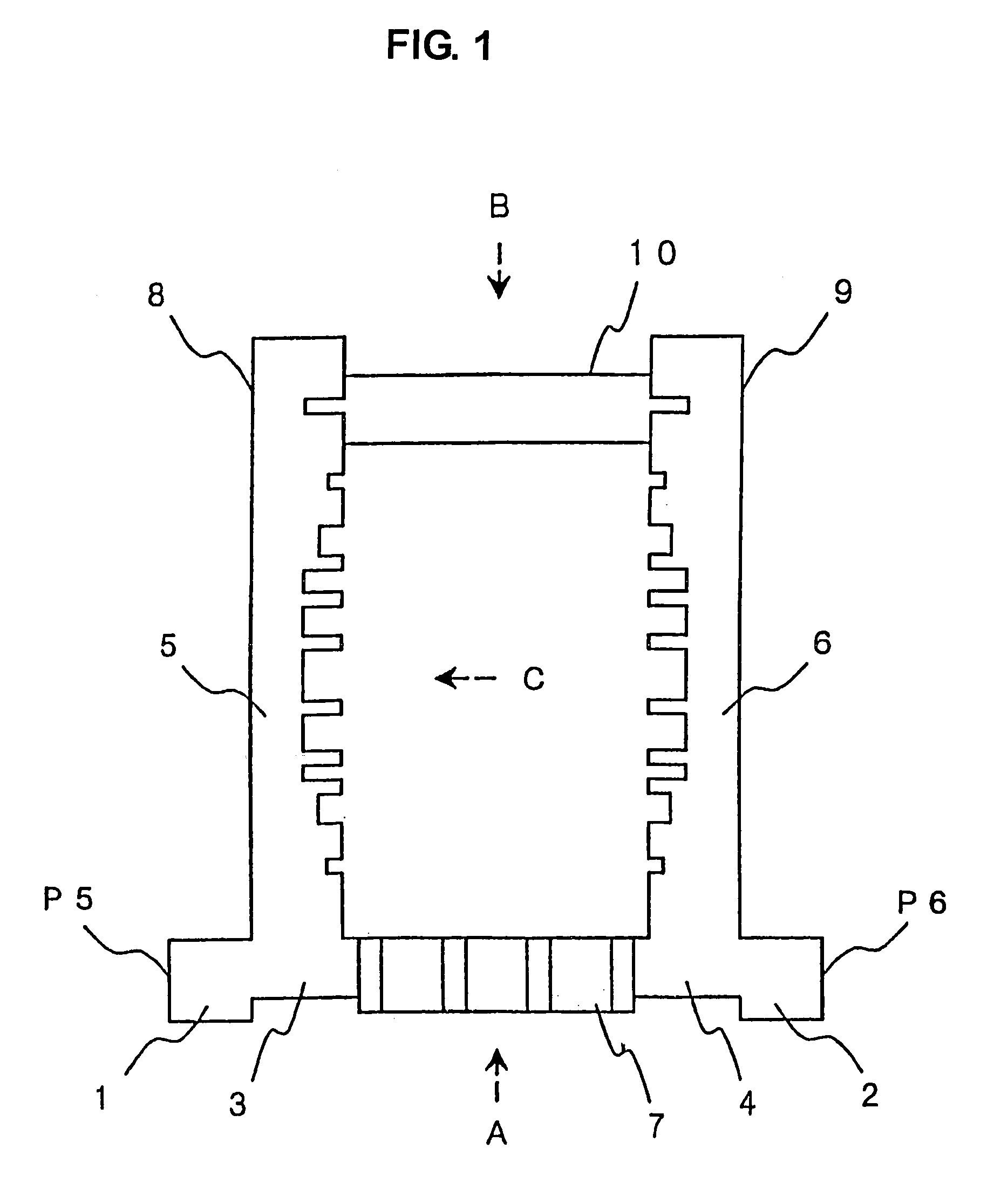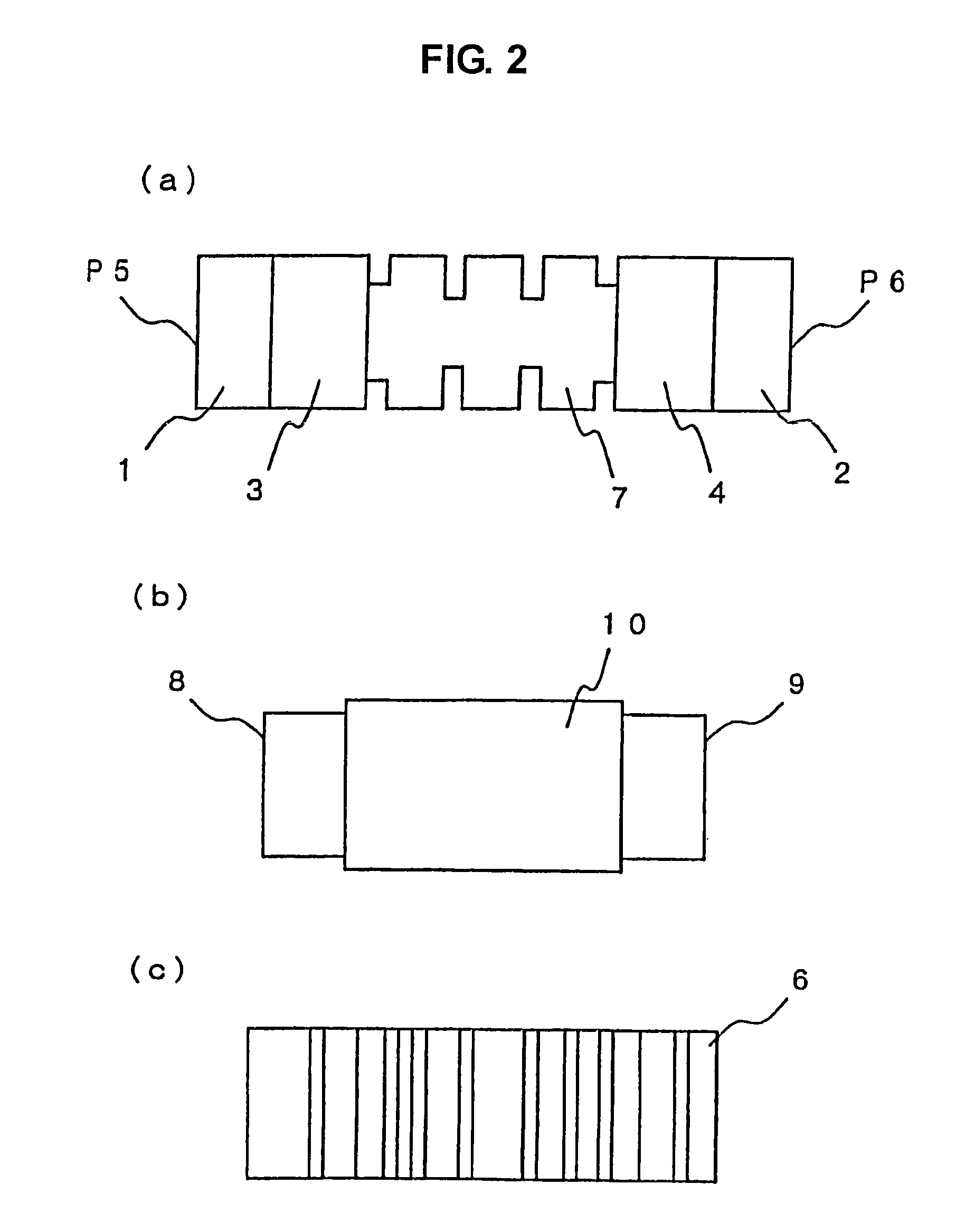High frequency module and antenna device
a high frequency module and antenna technology, applied in the direction of antennas, electrical equipment, transmission, etc., can solve the problems of limiting the flexibility of a configuration of a constituent circuit, affecting the operation of the antenna device, so as to improve the flexibility of a configuration of the constituent circui
- Summary
- Abstract
- Description
- Claims
- Application Information
AI Technical Summary
Benefits of technology
Problems solved by technology
Method used
Image
Examples
embodiment 1
[0045]FIG. 1 is a top view showing an arrangement of a high frequency module in Embodiment 1 of the present invention, FIG. 2(a) is a side elevation viewed from a direction A of FIG. 1, FIG. 2(b) is a side elevation of a low noise amplifier viewed from a direction B of FIG. 1, and FIG. 2(c) is an internal side elevation viewed from a direction C of FIG. 1. In those figures, reference numeral 1 denotes a rectangular main waveguide (first main waveguide) in which high frequency radio waves are inputted / outputted from an input / output terminal P5 to be described below; 2, a rectangular main waveguide (second main waveguide) in which high frequency radio waves are inputted / outputted from an input / output terminal P6 to be described below; 3, an E-plane T-branch circuit (first T-branch circuit) of a stepped rectangular waveguide in which the E-planes of the rectangular waveguide each have a T-shape and its branch portion (branch point) is provided with a matching step; 4, an E-plane T-bran...
embodiment 2
[0056]FIG. 3 is a top view showing an arrangement of a high frequency module according to Embodiment 2 of the present invention, FIG. 4(a) is a side elevation viewed from a direction A of FIG. 3, FIG. 4(b) is a side elevation of a low noise amplifier viewed from a direction B of FIG. 3, and FIG. 4(c) is an internal side elevation viewed from a direction C of FIG. 3.
[0057]In Embodiment 1 described above, the band-pass filter 7 is illustratively connected to the rectangular waveguide E-plane T-branch circuits 3 and 4. As shown in FIG. 3, however, the band-pass filter 7 is replaced by an inductive iris-coupled rectangular waveguide band-pass filter 11 (first band-pass filter) which is connected to the E-plane T-branch circuit 3 and which has a partially bent longitudinal axis, a rectangular waveguide E-plane bend 13 (first bend) connected to the band-pass filter 11, a rectangular waveguide E-plane bend 14 (second bend) connected to the rectangular waveguide E-plane bend 13, and an indu...
embodiment 3
[0061]FIG. 5 is a top view showing an arrangement of a high frequency module according to Embodiment 3 of the present invention, FIG. 6(a) is a side elevation viewed from a direction A of FIG. 1, FIG. 6(b) is a side elevation of a low noise amplifier viewed from a direction B of FIG. 5, and FIG. 6(c) is a side elevation viewed from a direction C of FIG. 5. In Embodiment 1 described above, the low-pass filters 5 and 6 are illustratively connected to the rectangular waveguide E-plane T-branch circuits 3 and 4. As shown in FIG. 5, however, the low-pass filters 5 and 6 are replaced by inductive iris-coupled rectangular waveguide band-pass filters 15 and 16 (first band-pass filter and third band-pass filter). Note that the band-pass filter 7 corresponds to the second band-pass filter.
[0062]Here, the inductive iris-coupled rectangular waveguide band-pass filters 15 and 16 used in Embodiment 3 each have a structure similar to that of the inductive iris-coupled rectangular waveguide band-pa...
PUM
 Login to View More
Login to View More Abstract
Description
Claims
Application Information
 Login to View More
Login to View More - R&D
- Intellectual Property
- Life Sciences
- Materials
- Tech Scout
- Unparalleled Data Quality
- Higher Quality Content
- 60% Fewer Hallucinations
Browse by: Latest US Patents, China's latest patents, Technical Efficacy Thesaurus, Application Domain, Technology Topic, Popular Technical Reports.
© 2025 PatSnap. All rights reserved.Legal|Privacy policy|Modern Slavery Act Transparency Statement|Sitemap|About US| Contact US: help@patsnap.com



